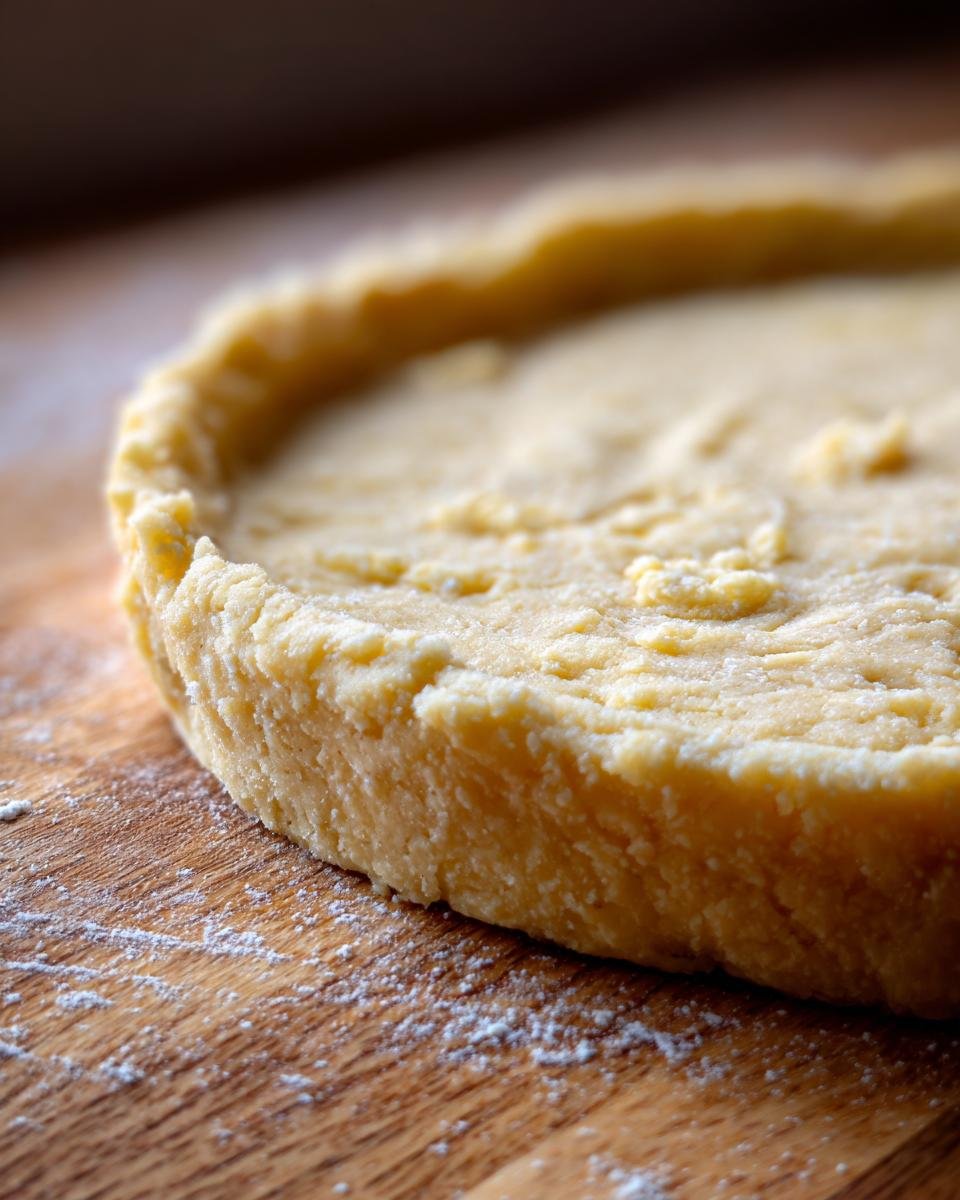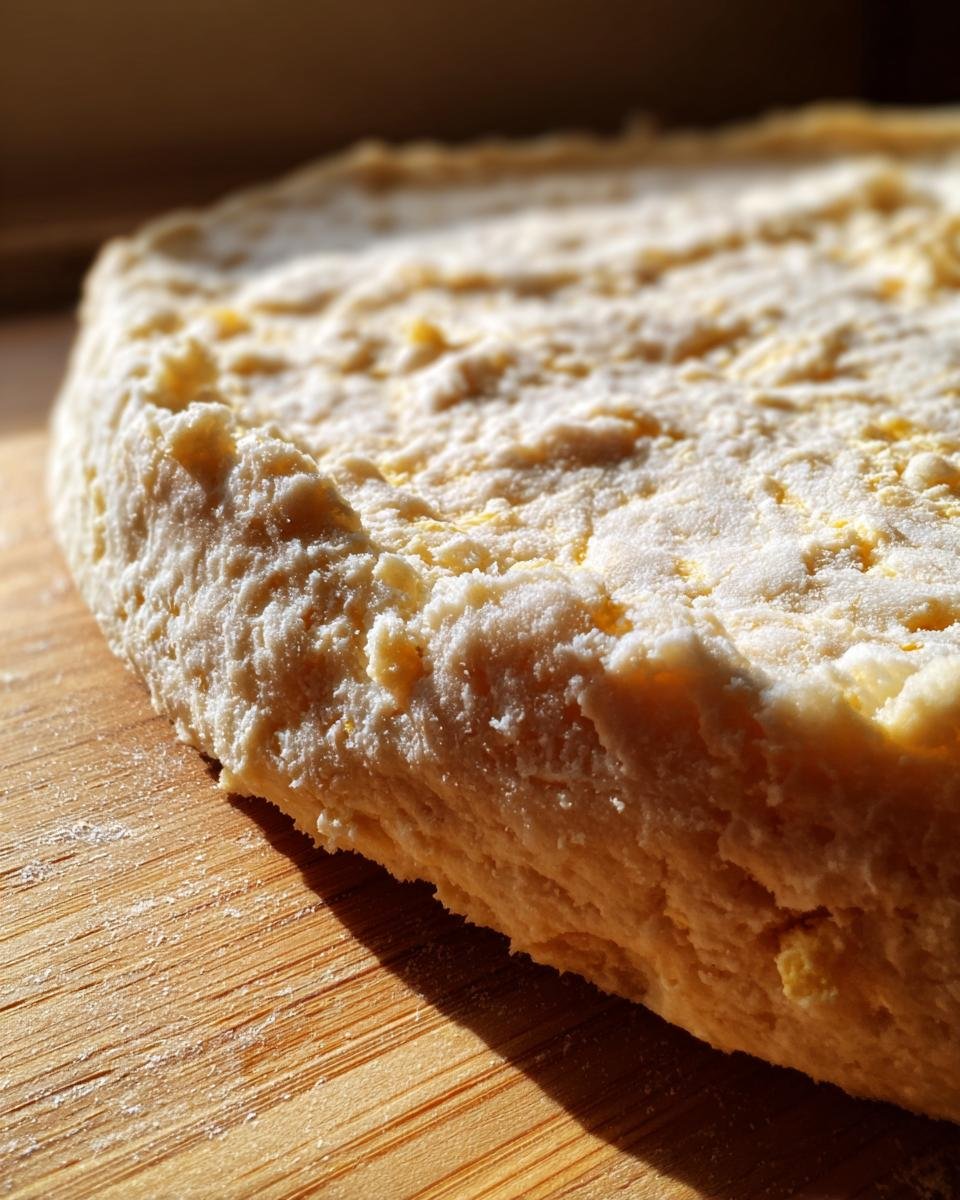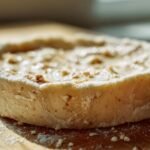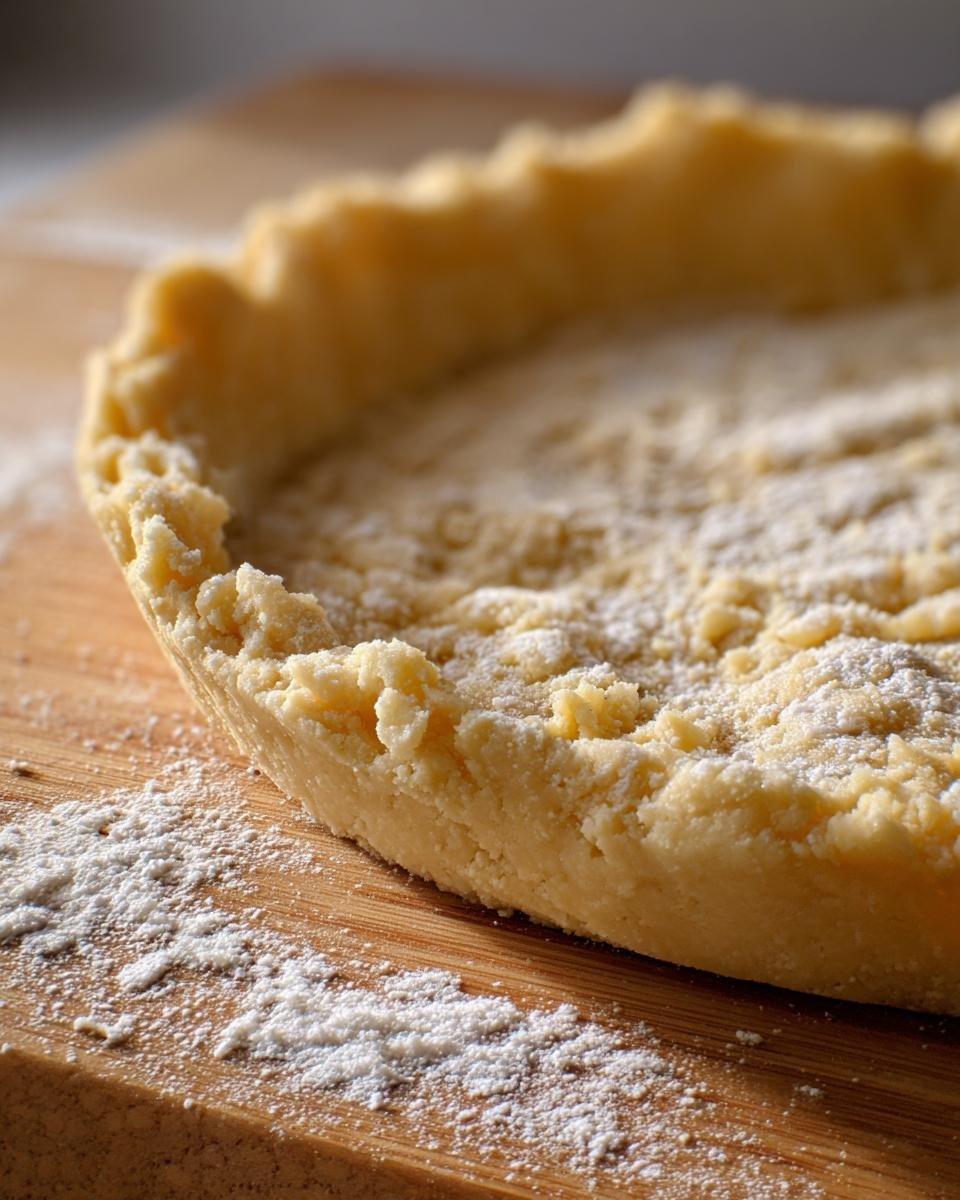Okay, let’s talk about tart crusts. Not just any tart crust, mind you, but THE tart crust – the one that makes your sweet and savory creations truly sing. I’ve spent years perfecting this simple tart crust dough, and trust me, it’s a game-changer! It’s all about achieving that perfect balance: flaky, buttery, and just sturdy enough to hold all your delicious fillings without getting soggy.
My secret? It’s surprisingly simple, and it all comes down to a few key things that I’ll dive into. This isn’t some fussy, complicated pastry that requires a million steps. Nope! This is the kind of tart crust dough that even a beginner can nail on the first try. Get ready to impress yourself (and everyone you feed!).
Why This Tart Crust Dough is Your Go-To
Honestly, this tart crust dough is my absolute favorite for so many reasons:
- It’s incredibly easy to whip up, perfect even if you’re new to pastry!
- It’s super versatile – works like a dream for both sweet fruit tarts and savory quiches.
- You’re guaranteed a beautifully flaky and buttery crust every single time. No more sad, soggy bottoms!
Seriously, once you try this, you’ll wonder how you ever lived without it.
Gathering Your Tart Crust Dough Ingredients
Alright, let’s get down to business with what you’ll need for this amazing tart crust dough. It’s a short list, but the quality of each ingredient really makes a difference, especially when we’re aiming for that perfect flaky texture. You’ll want to have everything measured out and ready to go before you start.
Flour and Salt: The Foundation of Your Tart Crust Dough
First up, we need 1 and 1/2 cups of all-purpose flour. This is our main structure, giving the tart crust dough its body. Just a touch of salt, about 1/2 teaspoon, is added to enhance the flavor, bringing out that buttery goodness. Don’t skip the salt!
The Magic of Cold Butter for Tart Crust Dough
Now for the star of the show: 1/2 cup (which is one stick) of cold, unsalted butter, cut into cubes. Seriously, this butter *has* to be cold. Like, fridge-cold or even a few minutes in the freezer cold. When this cold butter hits the hot oven, it steams and creates little pockets of air, which is exactly what gives you those glorious flaky layers in your tart crust dough. Don’t even think about using softened butter here!
Ice Water: Bringing Your Tart Crust Dough Together
Finally, we’ll need 3 to 5 tablespoons of ice water. This is our binder. The colder the water, the better it is for keeping that butter from melting. We add it slowly because we just want the dough to *barely* come together, not get sticky or tough. Too much water makes for a tough tart crust dough, and nobody wants that!
Step-by-Step Guide to Making Perfect Tart Crust Dough
Alright, let’s get our hands a little floured and make some magic happen! Making this tart crust dough really isn’t complicated, but a few little tricks ensure it turns out perfectly flaky and delicious every time. Grab your largest mixing bowl and let’s get started on this simple tart crust dough.
Combining Dry Ingredients for Tart Crust Dough
First, in your big bowl, give the flour and salt a good whisk together. This just makes sure everything is evenly distributed. It’s a tiny step, but it really helps create a uniform tart crust dough from the start.
Incorporating Butter into the Tart Crust Dough
Now, toss in those cold butter cubes. This is where the flakiness begins! I like to use a pastry blender, but your fingertips work just fine too. You want to work the butter into the flour until it looks like coarse crumbs, and you’ll still see some little pea-sized bits of butter. Those little butter bits are our secret weapon for flaky layers in the tart crust dough. Don’t overdo it and make it all look like fine sand!

Adding Water to Form the Tart Crust Dough
This is the delicate part. Add your ice water, just a tablespoon at a time. Mix gently with a fork after each addition. You’re looking for the dough to *just* start coming together. It should clump up when you squeeze it, but it shouldn’t feel wet or sticky. Stop adding water as soon as it holds together. Overmixing or adding too much water is the quickest way to a tough tart crust dough, and we absolutely want to avoid that!
Chilling Your Tart Crust Dough for Success
Once the dough is just coming together, gently gather it into a ball. Don’t knead it! Just shape it into a flat disc – this makes it easier to roll out later. Wrap it up tightly in plastic wrap and pop it into the fridge. You want to chill this beautiful tart crust dough for at least 30 minutes. This lets the gluten relax and the butter firm up again, which makes rolling it out so much easier and guarantees that beautiful flaky texture when it bakes.
Tips for Flawless Tart Crust Dough Every Time
You know, making a truly great tart crust dough is all about a few simple habits that make a world of difference. It’s not complicated, but paying attention to these little details is what separates a good crust from a *great* one. Trust me, these tips will make your tart crust dough turn out perfectly flaky and tender every single time.
Maintaining Cold Temperatures for Tart Crust Dough
Seriously, I can’t stress this enough: keep everything cold! Cold butter, cold water, even a cold bowl can help. Cold ingredients are the secret sauce for that amazing flaky texture in your tart crust dough. If your kitchen is warm, pop your flour in the freezer for a few minutes too!
Avoiding Overworking Your Tart Crust Dough
The biggest mistake people make with pastry is overmixing. When you work the dough too much, you develop the gluten in the flour, which makes your tart crust dough tough instead of tender and flaky. So, mix just until it comes together, and be gentle!
Frequently Asked Questions About Tart Crust Dough
Got questions about this amazing tart crust dough? I’ve got answers!
Q: Can I use this tart crust dough for sweet and savory tarts?
Absolutely! That’s the beauty of this versatile recipe. It’s neutral enough to pair perfectly with everything from a rich chocolate ganache to a savory mushroom and Gruyère filling.
Q: My tart crust dough is tearing when I try to roll it. What am I doing wrong?
This usually happens if the butter has gotten too warm, or if the dough is too dry. Make sure your butter and water were super cold to start, and don’t be tempted to add too much extra flour. If it’s too warm, pop that tart crust dough back in the fridge for 15-20 minutes to firm up.
Q: Do I need to blind bake this tart crust dough?
For most tarts, especially those with wet fillings like quiches or custard tarts, blind baking is a good idea! It helps ensure you don’t get a soggy bottom. Just prick the bottom with a fork, line it with parchment paper, fill with pie weights or dried beans, and bake until lightly golden before adding your filling. You can find out more about how to blind bake a pie crust on King Arthur Baking.
Q: Can I make this tart crust dough ahead of time?
Yes! You can make the dough, wrap it well, and keep it in the fridge for up to 2 days, or freeze it for up to a month. Just let it thaw in the fridge before you plan to roll it out.
Equipment You’ll Need for Tart Crust Dough
To make this fantastic tart crust dough, you won’t need a whole lot of fancy gadgets. Just a few staples from your kitchen will do the trick! You’ll want a large mixing bowl for combining everything. A pastry blender is super handy for cutting in the butter, but honestly, your own clean fingertips work just as well. And of course, you’ll need a fork for mixing in the water. That’s pretty much it for the dough-making part!
Ingredient Notes and Substitutions for Tart Crust Dough
Let’s chat a little more about these ingredients for our tart crust dough. For the flour, all-purpose is absolutely perfect here. It gives us that nice balance of structure and tenderness. You could try using a pastry flour if you have it, but honestly, AP flour is what I always reach for, and it works like a charm for this tart crust dough.
The butter *really* needs to be unsalted. That way, you control the salt level yourself, and it just tastes better. And please, please, please make sure it’s cold! If you’re in a pinch and only have salted butter, just cut the added salt down to about 1/4 teaspoon. For the water, if you don’t have ice water, just use the coldest tap water you can get. It makes a world of difference for getting that flaky tart crust dough we’re after!

Serving and Storage for Your Tart Crust Dough
Once your tart crust dough is chilled and ready, you can roll it out and bake it for your favorite sweet or savory tarts. Think fresh fruit tarts, creamy quiches, or even a classic lemon meringue! If you’re making a tart with a wet filling, I always recommend blind baking the crust first to avoid any sogginess. Just line it with parchment paper and pie weights. Learn more about the best pie crust recipe from Serious Eats.
Have extra dough? No worries! Wrap any leftover tart crust dough tightly in plastic wrap and it’ll keep in the fridge for up to 2 days. You can also freeze it for about a month. Just make sure to thaw it in the refrigerator before you plan to use it. A baked crust can be stored at room temperature for a day or two, or longer in the fridge.
Understanding the Nutritional Value of Tart Crust Dough
Just a quick note about the nutrition info you see for this tart crust dough: it’s an estimate, of course! The exact calories and nutrients can change a bit depending on the specific brands of flour and butter you use, and how much water you end up needing. It’s always best to think of these numbers as a general guide. For more information on baking ingredients, check out the Food Network’s guide to baking ingredients.
Print
Perfect Tart Crust Dough: 1 Simple Secret
- Total Time: 45 minutes
- Yield: 1 (9-inch) tart crust 1x
- Diet: Vegetarian
Description
A simple and versatile tart crust dough recipe that creates a flaky and buttery base for any sweet or savory tart.
Ingredients
- 1 and 1/2 cups all-purpose flour
- 1/2 teaspoon salt
- 1/2 cup (1 stick) cold unsalted butter, cut into cubes
- 3 to 5 tablespoons ice water
Instructions
- In a large bowl, whisk together the flour and salt.
- Add the cold butter cubes to the flour mixture.
- Cut the butter into the flour using a pastry blender or your fingertips until the mixture resembles coarse crumbs with some pea-sized pieces of butter remaining.
- Gradually add the ice water, one tablespoon at a time, mixing gently with a fork until the dough just comes together. Do not overmix.
- Gather the dough into a ball, flatten it into a disc, wrap it in plastic wrap, and refrigerate for at least 30 minutes before rolling.
Notes
- Ensure the butter and water are very cold for a flaky crust.
- Chill the dough sufficiently to make it easier to handle.
- Prep Time: 15 minutes
- Cook Time: 0 minutes
- Category: Baking, Pastry
- Method: Baking
- Cuisine: French
Nutrition
- Serving Size: 1/8th of crust
- Calories: 180
- Sugar: 0g
- Sodium: 120mg
- Fat: 10g
- Saturated Fat: 6g
- Unsaturated Fat: 4g
- Trans Fat: 0g
- Carbohydrates: 20g
- Fiber: 1g
- Protein: 3g
- Cholesterol: 25mg
Keywords: tart crust, pie dough, pastry dough, butter crust, flaky crust, baking, dessert, beginner

